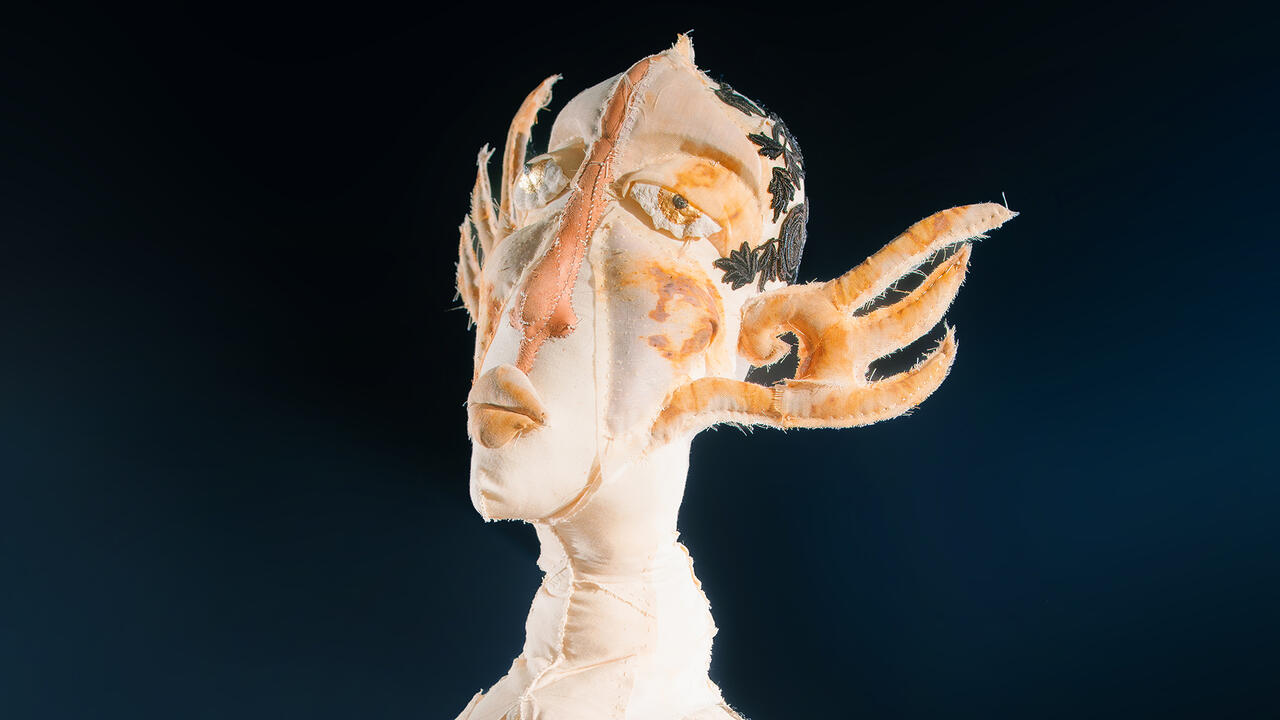Time Regained
The collected writings of Richard Bartholomew, one of India’s pre-eminent art critics
The collected writings of Richard Bartholomew, one of India’s pre-eminent art critics

Richard Bartholomew (1926–85) was a Burmese émigré who came to India in 1942. A poet, painter, photographer and art critic, he left behind a vast archive of material, which it has taken his elder son, Pablo, nearly three decades to work through. From a corpus of 17,000 negatives, Pablo made a selection of images that were scanned, restored digitally, re-converted to film and printed as silver gelatin prints. Following exhibitions at Photoink, New Delhi, in 2009, and at Chatterjee and Lal, Mumbai, in 2010, Bartholomew was ‘rediscovered’ by the Indian art world. Substantial portions of his images now appear to form a de facto family album of the Indian art world post-independence.
The archive includes portraits of important artists – including V.S. Gaitonde, M.F. Husain, Bhupen Khakhar and Nasreen Mohamedi – as well a host of party snapshots. Beyond the nostalgic pleasure offered by these images, they provide glimpses into the working conditions of a number of the artists at the time – many of them were taken in studios – as well as a study of Indian exhibition practices of the 1960s and ’70s. Corresponding to this family album of sorts are intimate images of Bartholomew’s actual family: his wife Rati Batra, whom he married in 1953, and his two sons. There are also Bartholomew’s self-portraits ‘as a dreaming, delicate youth sitting at his typewriter’ which – in the words of Geeta Kapur in The Way We Were: Photographs by Richard Bartholomew and Pablo Bartholomew (2010) – ‘positions him like an archetypal writer, and his career is that of a determinedly Modernist art critic with immense influence but leisurely pace’.
Bartholomew started publishing as an art critic from 1955, initially for Thought and the Indian Express; in 1962, he became the chief art critic for The Times of India. He also contributed to catalogues, monographs, anthologies and journals such as the Lalit Kala Contemporary. It is this corpus of writing that has been collected in Richard Bartholomew: The Art Critic (Bart, 2012). An elegant 639-page tome, its publication marks the second phase in the exhumation of the writer’s archive. The texts are illustrated with reproductions of the works cited in the reviews, along with images from Bartholomew’s personal photographic archive, including a terrific image of Clement Greenberg leading a public discussion of the ‘Two Decades of American Painting’ show at the Lalit Kala Akademi, New Delhi, in 1967. The edition also carries an introduction by Kapur, who contextualizes Bartholomew’s writings within the landscape of art criticism in post-independence India, along the way laying bare the personal impact he had on her own career and emphasizing that what ‘Richard did was to nurture the field of contemporary art, using metaphors and allegories of life, death and beauty’.
Though Bartholomew engaged with the wide gamut of artistic work being produced in India at the time, his definition of 20th-century Modernism was one which existed between conditions of expressionisms and abstraction. Although a committed Modernist, in the 1970s he pondered the metaphysics of neo-tantric art. Another feature is his fierce censuring of the newly established state cultural institutions, especially the Lalit Kala Akademi. In his final years, Bartholomew assumed the post of Secretary of the Akademi, as ‘he felt the need to take up the task of public rectification’.
Amidst the various texts that plot out a narrative of Indian Modernism, there are also significant first-person reports of exhibitions and happenings – such as his reviews of the first editions of the India Triennale and National Exhibition of Art – that have taken on great importance as records of events otherwise poorly documented. Another noteworthy report is of a painting exhibition by Khakhar from 1970. Bartholomew is enthralling as he describes in some detail a ‘happening’ devised by Khakhar, which counted Mohamedi and Kapur as participants. The book also includes his pointed criticism of the Marxist artist and writer J. Swaminathan, notably in an impressive review from 1966 titled the ‘The Swaminathan Cycle’, in which he writes: ‘To me – for better or for worse – the paintings don’t say this or that: they are Swaminathan, in one cycle of his being a painter, here and now […] These are like windows that open upon the beautiful. Swami has not transformed a yellow spot into a sun.’
Dedicated research into the archive will undoubtedly yield many more riches, yet reviving Bartholomew’s archive also highlights a significant issue. For his partisan views and assured criticality, which were widely shared in the public domain through print media, now draw attention to the limited space currently being offered by Indian newspapers to serious critical writing, the lack of a regional art journal, and how little is yielded in terms of scholarly and analytical writing in new art publications. Yet, somehow, while acknowledging such deficiencies, Bartholomew’s commitment and spirit to nurturing a field of art criticism advocates a confrontation with absence, and a strong need to continue to try and grow out of that context. In his afterword to the collected writings, Pablo eloquently suggests that this archive can ‘reshape some histories, to bring back the forgotten others, to reassess and alter the already hazily known, to redefine some standards of writing and our understanding, thoughts and feelings of an era lost. More importantly, to allow this man to breathe his words […] Memory, collectively lost, can now be somewhat regained.’






















